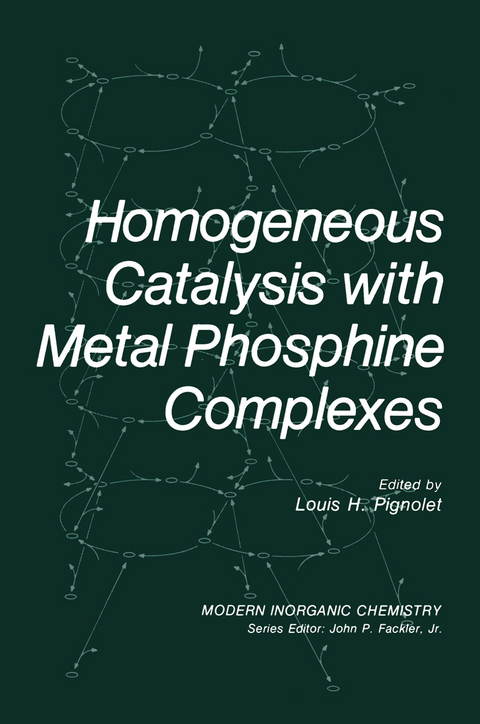
Homogeneous Catalysis with Metal Phosphine Complexes
Springer-Verlag New York Inc.
978-1-4613-3625-9 (ISBN)
The field of transition metal catalysis has experienced incredible growth during the past decade. The reasons for this are obvious when one considers the world's energy problems and the need for new and less energy demanding syntheses of important chemicals. Heterogeneous catalysis has played a major industrial role; however, such reactions are generally not selective and are exceedingly difficult to study. Homogeneous catalysis suffers from on-site engineering difficulties; however, such reactions usually provide the desired selectivity. For example, Monsanto's synthesis of optically-active amino acids employs a chiral homogeneous rhodium diphosphine catalyst. Industrial uses of homogeneous catalyst systems are increasing. It is not by accident that many homogeneous catalysts contain tertiary phosphine ligands. These ligands possess the correct steric and electronic properties that are necessary for catalytic reactivity and selectivity. This point will be emphasized throughout the book. Thus the stage is set for a comprehensive be treatment of the many ways in which phosphine catalyst systems can designed, synthesized, and studied.
1 Historical Introduction.- 2 Mechanistic Studies of Catalytic Reactions Using Spectroscopic and Kinetic Techniques.- 3 Structurally-Characterized Transition-Metal Phosphine Complexes of Relevance to Catalytic Reactions.- 4 Asymmetric Hydrogenation Reactions Using Chiral Diphosphine Complexes of Rhodium.- 5 Binuclear, Phosphine-Bridged Complexes: Progress and Prospects.- 6 Hydrogenation and Hydroformylation Reactions Using Binuclear Diphosphine-Bridged Complexes of Rhodium.- 7 Functionalized Tertiary Phosphines and Related Ligands in Organometallic Coordination Chemistry and Catalysis.- 8 Polydentate Ligands and Their Effects on Catalysis.- 9 Cationic Rhodium and Iridium Complexes in Catalysis.- 10 Hydrogenation Reactions of CO and CN Functions Using Rhodium Complexes.- 11 Decarbonylation Reactions Using Transition Metal Complexes.- 12 Homogeneous Catalysis of Oxidation Reactions Using Phosphine Complexes.- 13 Catalysis ofNitrogen -Fixing Model Studies.- 14 Polymer-Sound Phosphine Catalysts.
| Reihe/Serie | Microcirculation Review |
|---|---|
| Zusatzinfo | XVI, 489 p. |
| Verlagsort | New York, NY |
| Sprache | englisch |
| Maße | 155 x 235 mm |
| Themenwelt | Naturwissenschaften ► Chemie ► Anorganische Chemie |
| ISBN-10 | 1-4613-3625-2 / 1461336252 |
| ISBN-13 | 978-1-4613-3625-9 / 9781461336259 |
| Zustand | Neuware |
| Haben Sie eine Frage zum Produkt? |
aus dem Bereich


